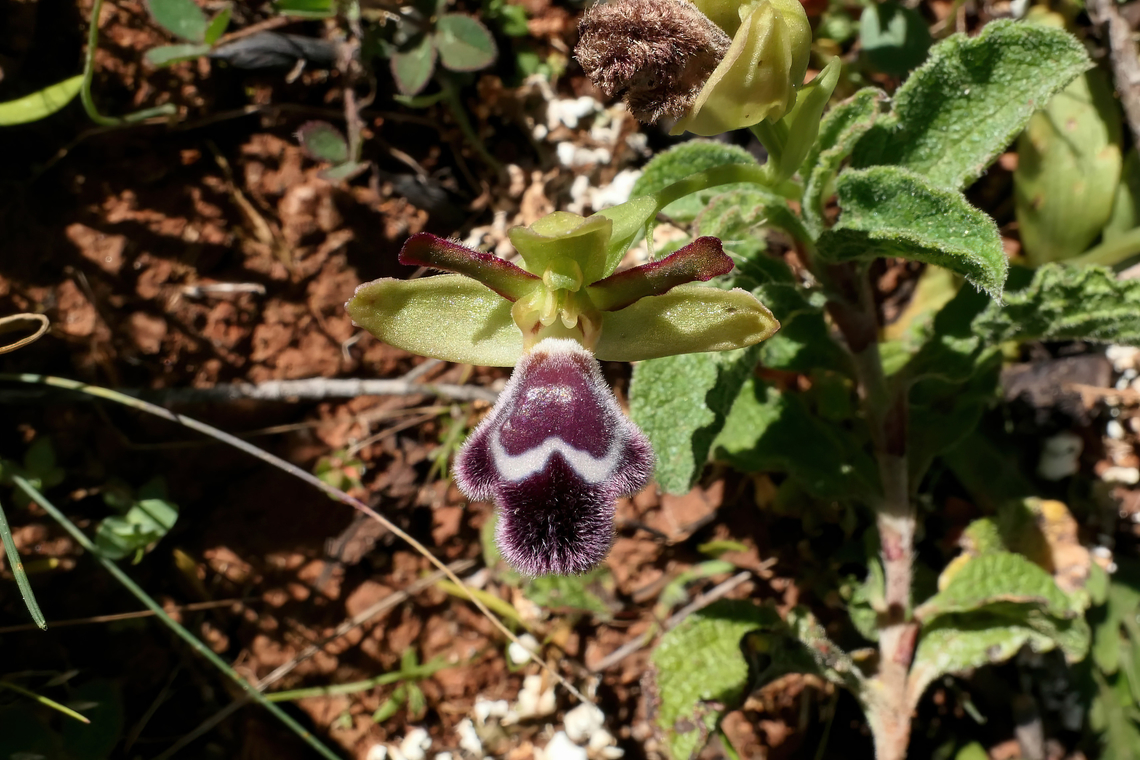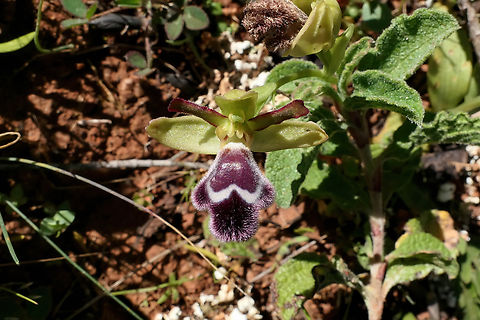Similar species: Agaves, Aloes, Onions
By Thibaud Aronson
All rights reserved
Uploaded May 23, 2023. Captured Mar 27, 2023 11:16 in Chania International Airport Ioannis Daskalogiannis, National Road, EO Aerodromiou Soudas, Chania 731 00, Greece.



comments (4)
https://www.catalogueoflife.org/data/taxon/7YK3L
Posted 2 years ago
Honestly, I'm not fond of the Belgian school of splitting, and I definitely think that their concept of species is way too narrow, and many of their species could be lumped together.
But that also means that other authorities end up lumping these taxa under different names!
Kew is typical of that and that's why I'm not really convinced by their lumping either.
For example, they have an extremely broad concept of Ophrys sphegodes. So that two clearly different Cretan taxa, Ophrys cretensis and Ophrys grigoriana, end up grouped together under O. sphegodes. Meanwhile, O. grigoriana is considered by some to be a subspecies of O. spruneri, which itself is better placed in the O. mammosa group, rather than O. sphegodes!
Another example would be Ophrys episcopalis, another "species" that may or may not be endemic to Crete. It is generally considered to be part of the Oprhys bornmuelleri group, a species that is accepted by the COL, but they lump O. episcopalis into their Ophrys holoserica group, and don't even give it a named subspecific status!
Since JD's taxonomic system is not hierarchical below the species level, and subspecies get grouped together with all members of the same genus, I think that in the specific case of Ophrys I'd rather create entries without subspecies, since whatever name comes before the subspecies is likely to be reshuffled in a few years anyway with the next generation of taxonomists. Posted 2 years ago, modified 2 years ago
Pragmatically speaking within JD, I have no strong or decisive opinion on either creating sub species or not. Although JD does not support a hierarchy between a "main" species and sub species, having a separate record can still have benefits. If the subspecies are meaningfully different, we can split photos that way, the subspecies can be independently found (via search, tags) and it's species text can be different. As such, there's nothing against it. As to whether it is the taxonomically correct thing to do is another matter, and may depend per case. I honestly often lack the knowledge to decide on it and gladly take whatever community consensus emerges.
We should not overlook an easy compromise: identify as the main species whilst elaborating on the subspecies in the title, description, tags. This way both the "main" species as well as the subspecies can be found.
The only area where I do have second thoughts is creating species records for plant hybrids and variations. My first objection is that it drifts away from the core of JD, which is to document wildlife, rather than man-made versions of it. For this same reason, we do not create 500 species records for the different "races" of dog. It's not core to our purpose.
The second objection is that it unfairly skews some of our metrics. Whilst some of the reward systems within JD can be called vanity metrics that do not really drive behavior, I feel differently about species introductions, "lifers", and country introductions. To many, these have real world meaning., They provide satisfaction and accomplishment, they expand your horizon as the side effect is ever deeper species knowledge, they document your track record, and they motivate exploration in the real world with a focus on diversity. I find it a beautiful mechanism as the personal accomplishment perfectly aligns with the community accomplishment.
Anyway, what I mean to say is that if I would now drive to a botanical center, photograph all variations and hybrids, and this way create 500 species records, and thus add 500 species intros to my name, I don't think that's right.
The concern is purely theoretical as I've never seen it used in this way, and one has to be incredibly motivated to make any dent in species stats, plus it would be very obvious and in plain sight that the system is used in ways not intended.
To be clear, I don't feel this way about subspecies, only about variations and hybrids. Posted 2 years ago